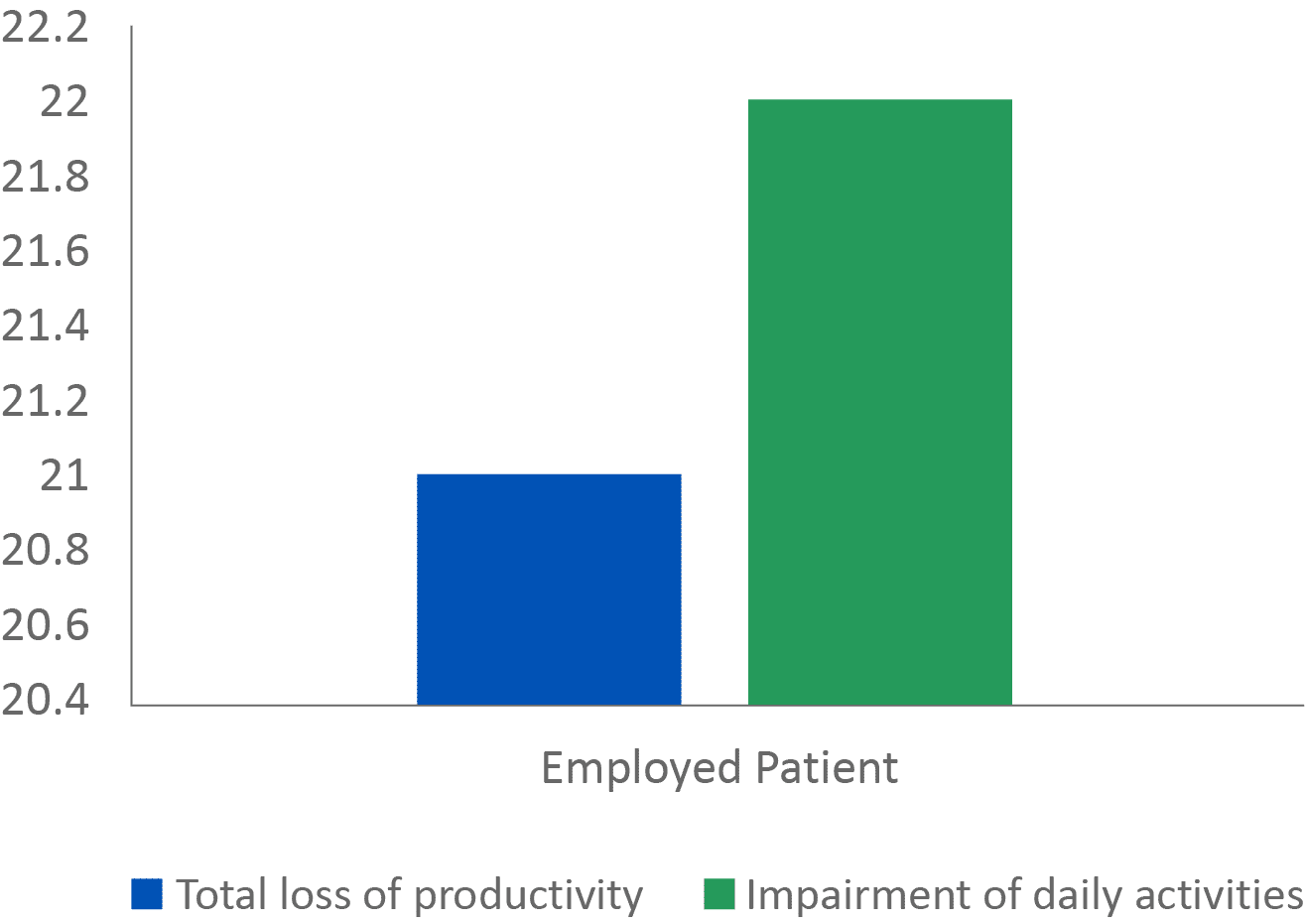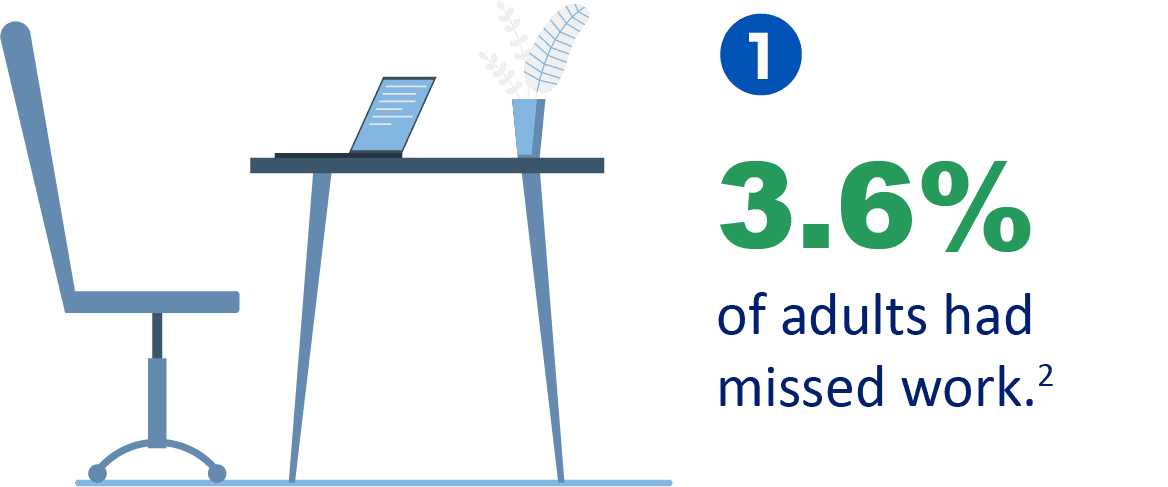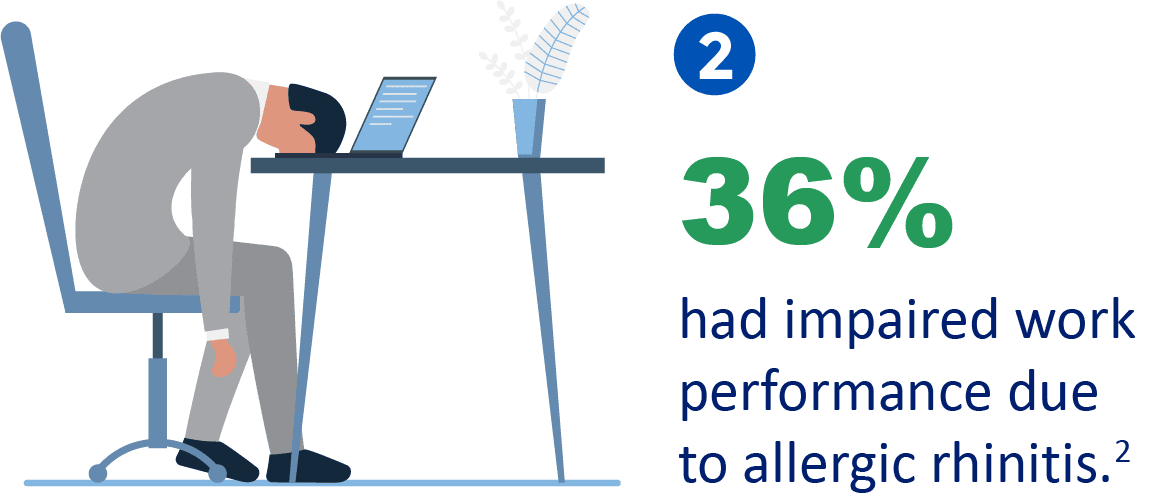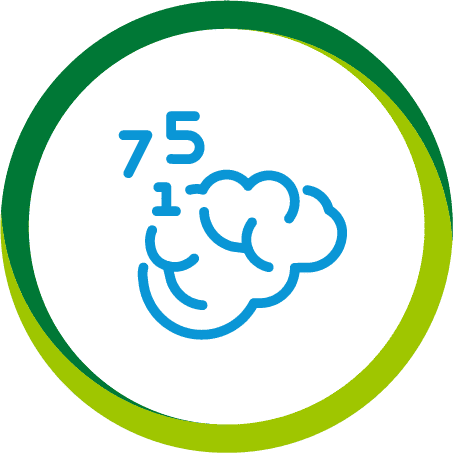BURDEN OF ALLERGIC RHINITIS
IN ADULTS
Atopic diseases such as allergic rhinitis, atopic dermatitis, and food allergy in addition to asthma have profoundly increased in frequency in recent decades.1
For more than a decade, the relationship between these diseases has been sometimes referred to as ‘the atopic march’. The basis for the atopic march lies in the theory that all allergic diseases may share a common ground and that this cohesion should be considered in their management.1
More recently, it has been acknowledged that type 2 helper T cells play a critical role in all atopic diseases. The body reacts to antigens with a complex immune response starting with Th2 cells, later on, control IgE production against allergens, then, cross-linking of IgE on mast cells releases mediators of hypersensitivity such as histamine and can result in immediate symptoms and in inflammation of the airways that can either manifest as allergic rhinitis, asthma, or both.1
ALLERGIC RHINITIS
AFFECTS QUALITY
OF LIFE IN ADULTS
Based on a questionnaire assessing 683 allergic rhinitis adult patients2:
Allergic Rhinitis causes an impairment in work productivity and daily activity.



BURDEN OF ALLERGIC RHINITIS
IN Children
- The presentation of allergic rhinitis in childhood is more frequent in boys.3
- Children with a bilateral family history of atopy may develop symptoms more frequently and at a younger age than those with a unilateral family history.3
- Aeroallergen sensitization rarely begins before 6 months of age but may start between 6 months and 2 years of life.3
- Infants born to atopic families are sensitized to pollen aeroallergens more frequently than to indoor aeroallergens in the first year of life.3
According to data from the International Study for Asthma and Allergies in Childhood:
Patients display symptoms of Rhino-conjunctivitis linked to allergic rhinitis.4,5

Allergic Rhinitis Affects Quality
of life in Children

Decrease in parent’s perceived productivity in children.6

Decrease in the mean of classroom activity impairment.5

Frequent snoring children had poorer academic performance.5
Th2: type 2 helper T cells; IgE: immunoglobulin E.
References:
1-Dierick, B. J., van der Molen, T., Flokstra-de Blok, B. M., Muraro, A., Postma, M. J., Kocks, J. W., & van Boven, J. F. (2020). Burden and socioeconomics of asthma, allergic rhinitis, atopic dermatitis and food allergy. Expert review of pharmacoeconomics & outcomes research, 20(5), 437-453. 2-Roger A, Arcalá Campillo E, Torres MC, Millan C, Jáuregui I, Mohedano E, Liñan S, Verdu P, Rubira N, Santaolalla M, González P, Orovitg A, Villarrubia E. Reduced work/academic performance and quality of life in patients with allergic rhinitis and impact of allergen immunotherapy. Allergy Asthma Clin Immunol. 2016 Aug 11;12:40. doi: 10.1186/s13223-016-0146-9. PMID: 27525014; PMCID: PMC4982204. 3-Meltzer, E. O.(2016). Allergic Rhinitis. Immunology and Allergy Clinics of North America, 36(2), 235–248. doi:10.1016/j.iac.2015.12.002 4-Akhouri S, House SA. Allergic Rhinitis. 2022 Jun 5. In: StatPearls [Internet]. Treasure Island (FL): StatPearls Publishing; 2022 Jan–. PMID: 30844213. 5-Mir E, Panjabi C, Shah A. Impact of allergic rhinitis in school going children. Asia Pac Allergy. 2012 Apr;2(2):93-100. doi: 10.5415/apallergy.2012.2.2.93. Epub 2012 Apr 30. PMID:
22701858; PMCID: PMC3345332.
6-Meltzer EO, Blaiss MS, Derebery MJ, Mahr TA, Gordon BR, Sheth KK, Simmons AL, Wingertzahn MA, Boyle JM. Burden of allergic rhinitis: results from the Pediatric Allergies in America survey. J Allergy Clin Immunol. 2009;124(3 Suppl):S43-70.
